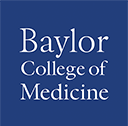Cadaver Musculoskeletal Anatomy, Dystonia and Spasticity Virtual Injection Course
Virtual Conference
Friday-Saturday, December 11-12, 2020
Activity Overview
Spasticity is a significant problem after TBI/stroke/spinal cord injury (SCI) and other UMN syndromes. Urban et. al. predicted spasticity after ischemic stroke was present in 42.6% of patients. Adams and Hicks describe 65-78% of patients with chronic SCI has symptoms of spasticity. Hibbard et. al. described 23.4 % of patients with traumatic brain injury have spasticity in 1998. Education and training specialists in all the treatment options of spasticity including therapy, medications, injection with botulinum toxins, and baclofen pumps is imperative in restoration of the individual back to health, function, and potentially employment.
Most recently, onabotulinum toxin a received FDA approval for use in the lower limbs for those with predominantly lower limb symptoms such as due to spinal cord injury (SCI) and spastic diplegia from a variety of conditions such as cerebral palsy and spina bifida. As the life span of pediatric onset conditions extends into adulthood, these conditions are no longer for just children. Physicians that treat adults must be adept at treating these conditions as well, and in fact and entire transition to adulthood clinic addresses this at Baylor. We will review guidelines for treating adults with spasticity due to cerebral palsy and other childhood conditions.
Target Audience
Physical Medicine and Rehabilitation residents, fellows, faculty private practice physiatrists
Learning Objectives
At the conclusion of the conference, participants should be able to:
- Describe the musculoskeletal anatomy of the arm and leg as it relates to limb spasticity injection
- Describe the effects of torsion on anatomy with spasticity and how that effects needle injection sites.
- Describe suspension and injection strategies for botulinum toxin.
Educational Methods
Lectures ▪ Observation of the Cadaver Workshop
Evaluation
Evaluation by questionnaire will address program content, presentation, and possible bias.
Part I: Friday, December 11, 2020
7:00 Overview and CME – Moderator: Dr. Faye Tan
7:15 MSK anatomy of the arm – Dr. Jacqueline Wertsch
8:15 MSK anatomy of the leg – Dr. Jacqueline Wertsch
9:15 Break
9:30 Torsional anatomy of the arm – Dr. Faye Tan
10:00 Torsional anatomy of the leg – Dr. Faye Tan
10:30 Adjourn
Part II: Saturday, December 12, 2020 - Cadaver Lab
8:00 Prosectional anatomy of the cadaver arm – Dr. Han Zhang
9:00 Prosectional anatomy of the cadaver leg – Dr. Han Zhang
10:00 Break
10:15 Resuspension of toxin and injection of anatomic models – Dr. Faye Tan
10:45 Spasticity injection strategies for the arm and leg – Dr. Faye Tan
11:45 Q&A and practice time
12:15 Adjourn
Physicians
Baylor College of Medicine is accredited by the Accreditation Council for Continuing Medical Education (ACCME) to provide continuing medical education for physicians.
Baylor College of Medicine designates this live activity for a maximum of 7.0 AMA PRA Category 1 Credits™. Physicians should claim only the credit commensurate with the extent of their participation in the activity.
Available Credit
- 7.00 AMA PRA Category 1 Credit™
- 7.00 Attendance

 Facebook
Facebook X
X LinkedIn
LinkedIn Forward
Forward